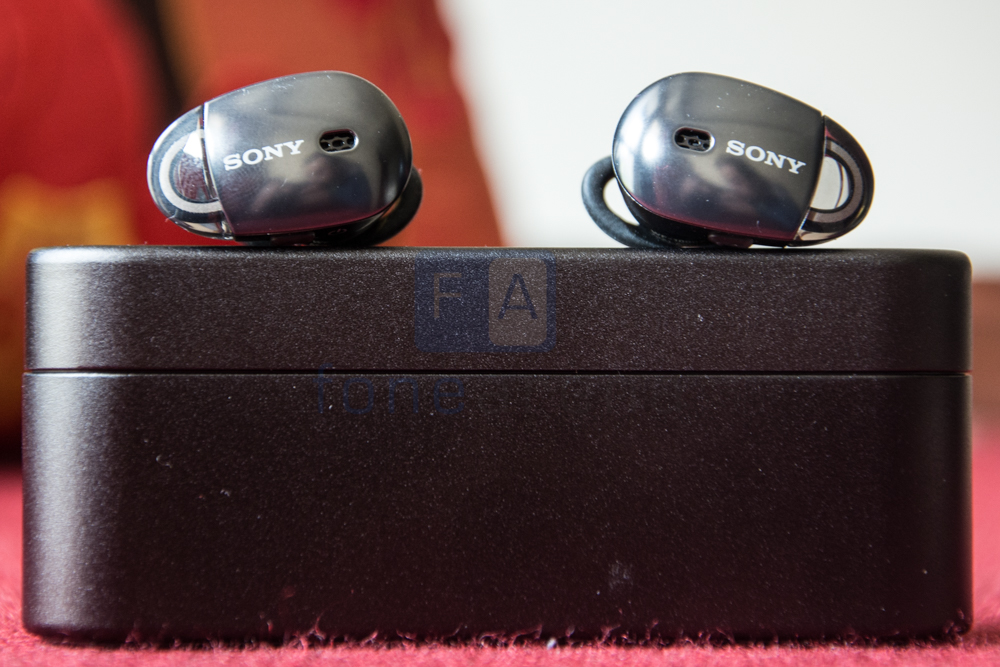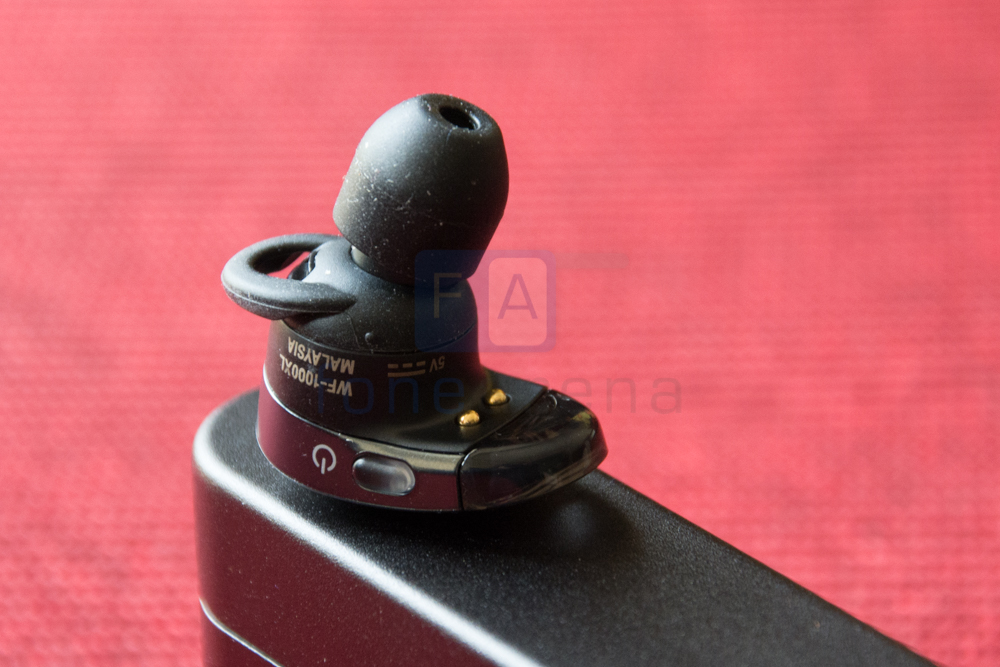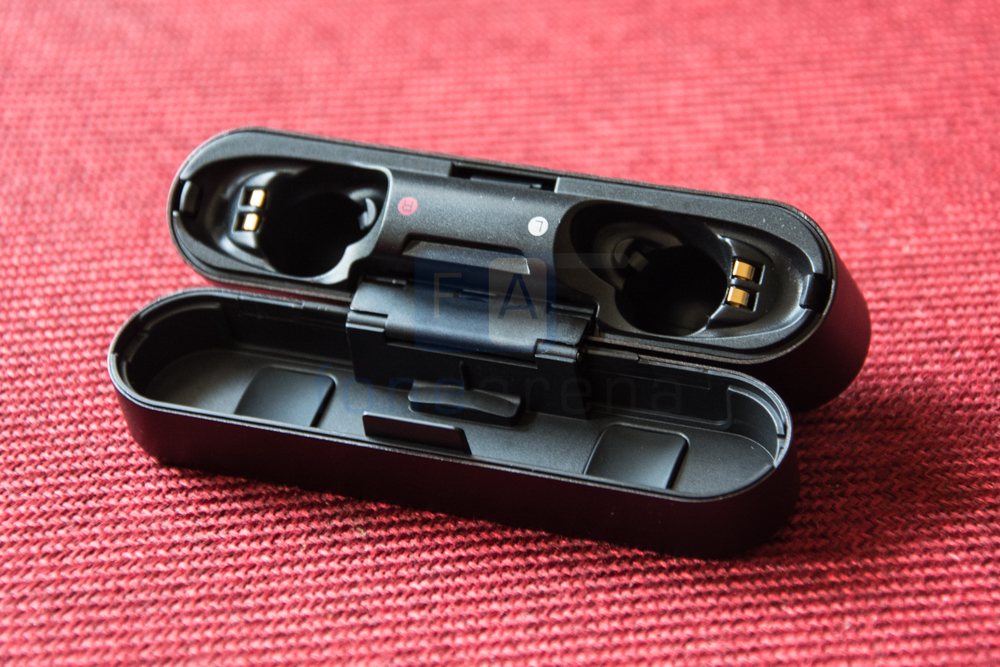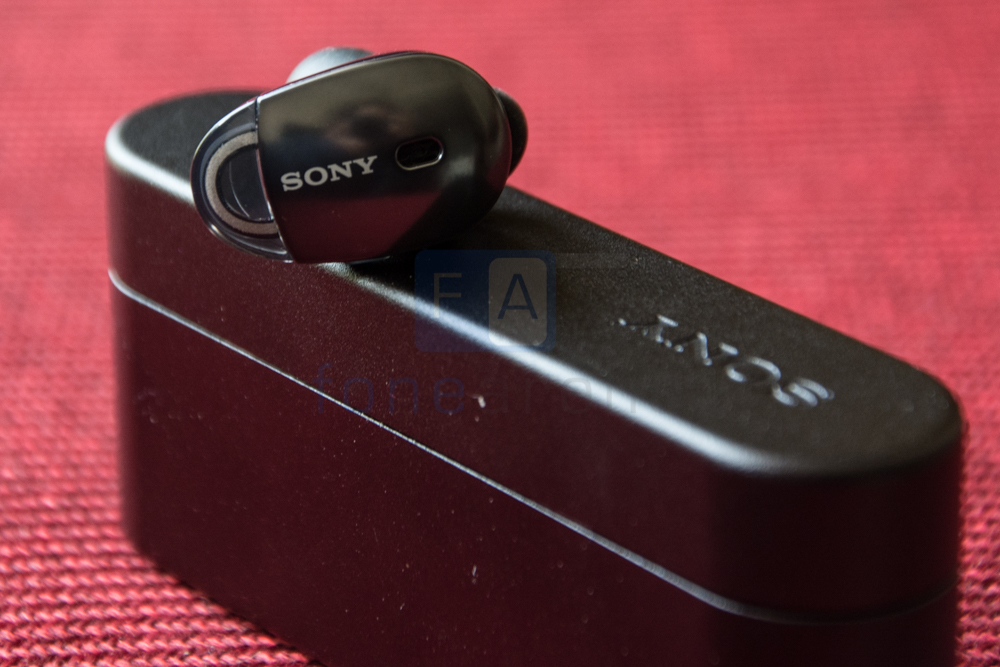
Wireless audio has really come into a category of its own over the last two years or so. The ongoing trend of ditching the headphone jack on phones has, of course, spurred all manner of audio product manufacturers to get a move on. One of the newest form factors to hit the market is of truly wireless earphones. Bragi might have been amongst the first to release truly wireless hardware but it was Apple’s Earpods that, predictably, made the world listen. Long story short, here we have with us the Sony WF-1000X, the Japanese company’s first truly wireless headset. Follow along for our review.
Design
While the Bragi Dash takes the cake for being the most discrete truly wireless headset out there, the Sony WF-1000X comes fairly close too. Available in gold and black, the earphones are finished in a shiny but matte material.

Look closely and you’ll observe that the front half of the earbud is transparent and has a metal band running under it. Sony has done a great job in creating an antenna design that is functional as well as aesthetically pleasing too. We observed antenna performance to be much better compared to some of the other truly wireless headsets out there. While there were still a few occasional dropouts and the AirPods certainly take the cake here, it wasn’t as bad as some of the first generation headsets we’ve tried out.

Buttons on either earbud let you power it on and switch between noise canceling modes. The buttons are on the smaller side and it can be a bit hard to reach out while you’re wearing the headset. The WF-1000X ships with a full range of silicon and foam based ear tips to help you get the best fit possible. A rubber wing tip helps you get a tighter fit in your ear and to use it while engaging in fitness activities. Sony has helpfully included a larger wingtip as well. Weighing about 6 grams, the earbuds are light and comfortable enough to wear for hours on end. Now comfort is subjective and it really depends on the fit that you can manage. We’ve heard conflicting reports online but in our experience, the WF-1000X proved to be one of the most comfortable in-ear headset that we’ve ever tried but we would encourage you to try it in store.

Look closely and you will notice twin pogo pins on the inner side of the earbuds that are critical to charging them up. Sony has designed a smart albeit slightly fiddly case for the WF-1000X. While most other truly wireless headsets use magnets to line up the charging pins, these require you to place them in cubby holes and then push down on the tips to click them into position. Once the earbuds start charging, you’ll observe a glowing red light in the transparent end.

The charging case looks like a squished Vita TV and is nowhere near as compact as the one for the Apple Airpods or the Bragi Dash. Nonetheless, it is smart to look at. Over at the back is a microUSB charging port alongside an LED light that indicates charging status for the case itself. There’s an NFC chip built in that lets you easily pair up the headset. To be fair, unless you shift phones often enough to need tap to connect, we found pairing the WF-1000X to be a fast reliable process. The most important function of the case is to charge the headset. With the built-in battery, Sony claims a battery life of about 9 hours which includes three additional charges. On its own though, the battery life is abysmal. Sony claims 3 hours of stand-alone battery life but we could never get more than 2.5 hours at best. Forget about intercontinental flights, the earbuds would not even last half a work day and this is simply unacceptable.
Sound Quality
The redemption for the WF-1000X comes from its rather good sound quality. Where everyone has taken a convenience/battery life first approach, Sony takes up audio and delivers too. These diminutive earphones consistently pump out extremely enjoyable music across genres and offer a not very constrained soundstage to boot.
The 6mm dynamic drivers do a splendid job of creating an airy and textured soundstage. The mids particularly shine through and rock, pop music sounds wonderful. The earphones are by no means neutral but the sound signature is very musical and fun. They do a great job of reproducing crashing cymbals in punk tracks. Move over to the mids and you’ll observe lush vocals without standing forward in the mix. Tracks like Nouh Al Hamam by Maryam Saleh sounded gorgeous with the perfectly tight bass guitar intro and tight drum beat. The earphones do very well in the lows department too but might not please bass heads. Sony’s headphones app lets you adjust the equalizer and boost bass as well but we didn’t feel the need to play around with it.
Moving on to Active Noise Cancellation, you’ll find a subset of the features found on the larger WH-1000XM2. While the noise cancellation effect isn’t as powerful as on the larger headset, paired with the passive isolation that comes with being an in-ear headset, we found it to be satisfactory. Playing music at a low volume was sufficient to completely drown out background noise but unlike the WH-1000XM2, they don’t do as good a job if you simply want to turn down external audio without playing music.
Conclusion
It’s been a while since I enjoyed listening to music on a review pair of earphones so much and the woeful battery life was the only deterrent to an otherwise supremely enjoyable experience. As a first gen product, the WF-1000X is not perfect at all but damn is it an enjoyable listening experience.

We found connectivity to be better than a lot of the competition but drop outs were not uncommon. Significant latency means that you can’t really use these for watching video and well, the battery lasts just two and a half hours. Yet, these are some of the most fun sounding wireless earphones we’ve tried lately. Priced at Rs. 14,999, it is hard to recommend the Sony WF-1000x but we really hope to see the company fix all of the issues in the next version.
